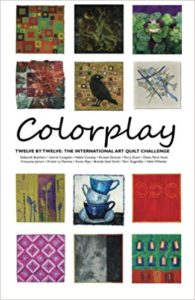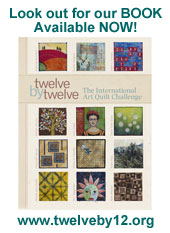This quilt is about the expereince of immigration and inspired by kuba cloths. Kuba cloth ( Or Bakuba Cloth) originates from the Democratic Republic of Congo (DRC) and are of two general forms, those, like this one which are made from cut pile raffia and are based on geometric patterns which subtly 'morph' and 'warp' as the cloth progresses. Others like this one are based on appliqued shapes.
One day last week I was reading a book about these cloths and thinking about how, frequently, one society attempts to understand another one by reading the clues in their cultural artifacts. In my work I come accross immigrants frequently. At one time it was people fleeing political instablity - many in fact came from war torn DRC. Now it is the Asian community of East Lancashire whose immigrant roots started with the need for labour in the local cotton mills and continues with the culture of family arranged marriage from the 'home village'.
The left hand side of this quilt represents the familiar 'home state'. It is traditional and slow with hand stitching and an ordered pattern. But it is not as stable as it maybe looks on first glance. Under the familar, political or personal disharmony is beginning. The pieces of the pattern are changing and disintegrating, pushing the immigrant out and into the right hand side of the quilt.
Here, in the 'western world, the quilt is faster and more mechanised, with machine stitching. The shapes are not unrelated to the home state side becuase societies are basically concerned with the same things - family life, economic prosperity, law and order and so on. Individulas in both places simply want food, shelter, love, community. But, in the new country these concerns are arranged in different ways. Systems of governance are organised differently. In both places there are courts for example, but the immigrant finds the new system confusing and scattered and hard to navigate. I remember in particular one asylum seeker from the DCR who was highly educated and spoke four languages fluently and whose extended family had been killed for poltical reasons. From a country where basic survival demands hard labour he was totally baffled as to why in the UK he was not allowed to have a work permit so he could be self supporting but at the same time was castigated in the press as a 'benefits scrounge'.
Even the means of communication are different. On the left the shapes are grey cloth to represent the kuba cloth. Some academics postulate that the patterns in the cloths may have had meanings to the makers and those who wore them. But here in the UK meaning is not woven into textiles, rather it is communicated in words. Not only are the words unafmilar but the way in which the words are presented is the exact opposite of the soft pilable cloth each caressed for months by the embroiderer and which have lasted for centuries. Rather, the grey shapes on the right are more ephemeral paper, to be precise a newspaper picture of a Kindle with its hard case and remotely transmitted material.
If you were wondering about the title, this quilt is part of a series I have commenced. The original Border Crossing is my Saqa auction quilt for this year. (see here for description)
On a lighter note: for those of you who read about my disappearing Elephant muse it turns out he did not run away at all but was just portrait shy. All Sunday while I made this, with the patio doors wide open to the sun, I was entertained by the trumpeting of the elephants who live across the fields behind us.
Immigrants themselves I guess.



7 comments:
Another lovely piece that tells a story and teaches us a lesson about the world we share. I like the handstitching that you have done on the left. The right side is very effective at evoking an out of control feeling.
It is always so interesting to consider your pieces from two perspectives--the storytelling aspect and the compositional artistic aspect. It tells the story beautifully and I really "get" the crossing from one culture to the other and their differences. Artistically, I especially like the morphing of the geometric pattern in the left side of the piece. Very graphic and intriguing. I know the flimsy, weak quality of the figures on the right support the story, but I would have liked, artistically, for them to be stronger and even more chaotic. This is a really interesting idea. I look forward to seeing more of the series.
I always enjoy your story-telling, and this one is no exception. It's wonderful to see that your design concepts becoming more and more sophisticated as well. I particularly like the way the accent colors cross over between the two sections. I always think of kuba cloth in warm, yellowy, colors so the grey is a bit of a surprise.
Helen what a wonderful way you have of telling the story behind your compositions. I only wish I had the ability to do the same.
Helen, these shapes are so strong and I think anyone looking at this would know there is a powerful message behind it.
I am really loving the direction your pieces are taking lately and this one seems to be another step in that direction. I agree that this tells an abstract story of organization contrasted with disorder, and the way you've details really highlights that theme. The way you tell the story behind this ia also fascinating, and as always I love seeing the depth with which you think through an idea. And I'll get to see this in person soon!!
Excellent! I really like it. I especially love the varied patterns on the left. The wider channel of hand stitching just off center is a nice resting spot and I am IN LOVE with the three little teal stitches that cross over between the two sides.
Post a Comment